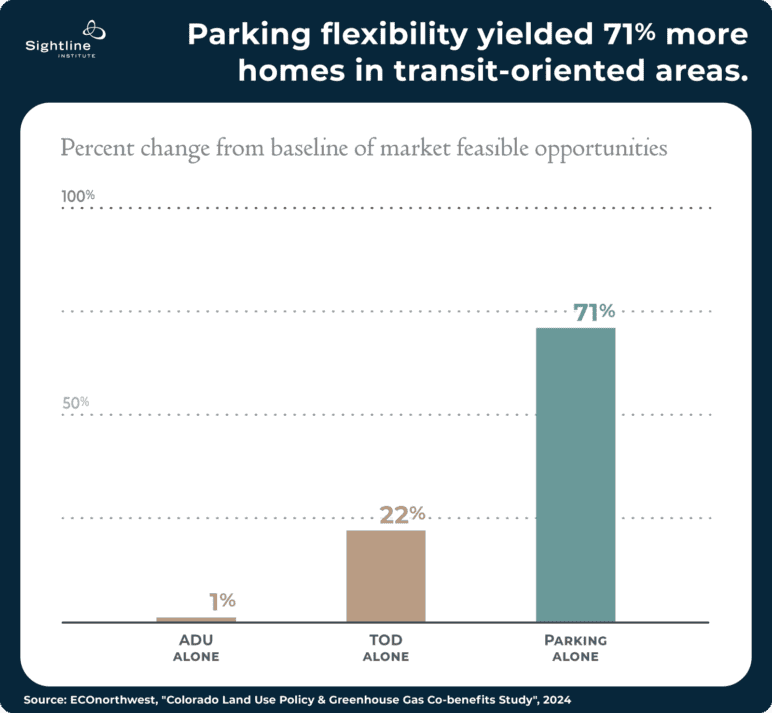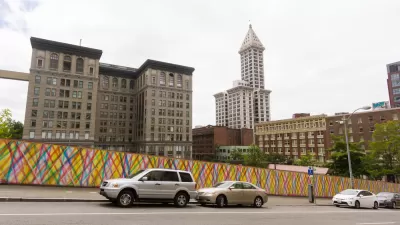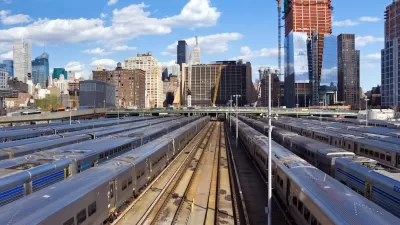More evidence that parking flexibility is key to housing abundance.

Making parking fully flexible could unlock more new homes than other land use reforms combined, according to new research out of Colorado that modeled how multiple policies would impact economic feasibility for new housing projects.
The findings add to a growing body of evidence that making off-street parking optional is a small policy change that can lead to an abundance of new homes. Even though all the buildings modeled in the analysis voluntarily included parking, allowing homebuilders to create less parking made the biggest difference. In fact, building at lower home-to-parking-space ratios than what Colorado cities currently require could result in 40 to 70 percent more homes than are feasible to build today, the study found.

“Requiring more parking than the market demands leads to inefficient outcomes,” researcher Ian Carlton explained. “Excess parking takes up space in buildings that could otherwise be housing, adds costs that are seldom offset by revenues, and can determine whether certain types of housing projects fit on sites of various sizes. [Real estate modeling group] MapCraft’s pro forma evaluations capture all three of these factors.”
Compared to other zoning reforms such as legalizing ADUs or increasing building heights near transit, parking reform proved to be two to three times more effective at boosting housing supply.
FULL STORY: Parking Reform Alone Can Boost Homebuilding by 40 to 70 Percent

Maui's Vacation Rental Debate Turns Ugly
Verbal attacks, misinformation campaigns and fistfights plague a high-stakes debate to convert thousands of vacation rentals into long-term housing.

Planetizen Federal Action Tracker
A weekly monitor of how Trump’s orders and actions are impacting planners and planning in America.

In Urban Planning, AI Prompting Could be the New Design Thinking
Creativity has long been key to great urban design. What if we see AI as our new creative partner?

King County Supportive Housing Program Offers Hope for Unhoused Residents
The county is taking a ‘Housing First’ approach that prioritizes getting people into housing, then offering wraparound supportive services.

Researchers Use AI to Get Clearer Picture of US Housing
Analysts are using artificial intelligence to supercharge their research by allowing them to comb through data faster. Though these AI tools can be error prone, they save time and housing researchers are optimistic about the future.

Making Shared Micromobility More Inclusive
Cities and shared mobility system operators can do more to include people with disabilities in planning and operations, per a new report.
Urban Design for Planners 1: Software Tools
This six-course series explores essential urban design concepts using open source software and equips planners with the tools they need to participate fully in the urban design process.
Planning for Universal Design
Learn the tools for implementing Universal Design in planning regulations.
planning NEXT
Appalachian Highlands Housing Partners
Mpact (founded as Rail~Volution)
City of Camden Redevelopment Agency
City of Astoria
City of Portland
City of Laramie





























